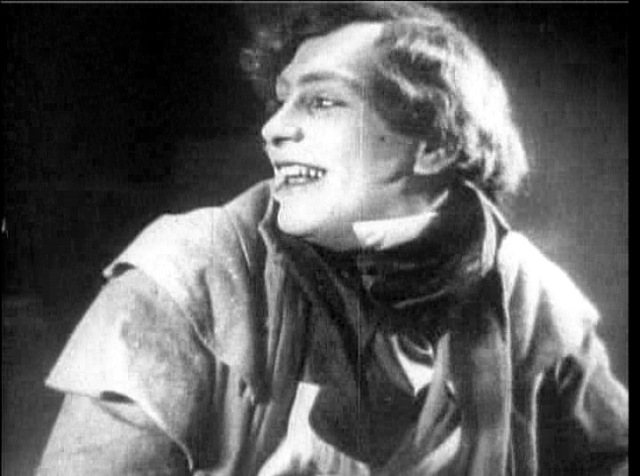Nosferatu: Re-imagined
by Peter B. Kay | Composer in Residence
Introduction
Nosferatu is campy fun by today’s standards, but when it debuted in 1922, it was a groundbreaking work of fear and suspense. Heavily based on Bram Stoker’s novel, Dracula, this is the film that set the stage for all horror movies to come.
Despite the description, silent movies weren’t silent at all. Though the audience couldn’t hear the voices of the actors, the films were always shown with some kind of live musical accompaniment. When visual arts and music are combined, the whole is greater than the sum of its parts. And we are excited to be able to recreate the experience of seeing the movie for the first time!
The Abridged Film
With the Espresso concerts being capped to one hour, the first thing that needed attention was the movie itself. When Nosferatu first hit theaters, the film ran for approximately 94 minutes – today several versions exist of varying lengths, but they are almost all in the 80-90 minute range. So to adapt the film for our Espresso series, I carefully edited the film down to 59 minutes. The whole process took roughly two months to complete: trimming the edges of almost every shot; cutting and re-editing a few scenes here and there; and reworking each of the title cards to be more legible (thus taking less time on screen).
Max Schreck’s eerie performance as Count Orlok (i.e. Count Dracula) was heighten by the fact that, through the magic of editing, the character never blinks throughout the entire movie!
Nosferatu is a well-known film with a strong cult following, but since it is now in the public domain, many edited versions exist as I mentioned earlier. Still, I was nervous about taking “the cutting knife” to the award-winning classic. To help settle my nerves, I reminded myself that modern audiences are far more versed in movie tropes (some of which were introduced in Nosferatu!) than they were in the 1920s.
Actually, it’s a lot like a modern performance of Mozart or Beethoven. Just as the conductor is fairly free to interpret the tempo markings (how fast is “Allegro” really?), movie-going audiences have different expectations and tastes than they used to.
For example, Mozart’s audience listened to music in a very different way than we do today thanks to our easy access to recordings. During the 18th century, it became common practice to repeat the exposition of a piece, offering the listener a second chance to hear (and become familiar with) a melody before the composer developed and toyed with it. Today, a conductor or ensemble may elect to skip repeats in the music, acknowledging that the audience may already know the tune well enough to proceed to the next section of the piece.
There are several scenes in Nosferatu that are pretty long by today’s standards, perhaps to give the viewer time to form connections, expectations, reactions, etc. But that was then. Now, regular moviegoers know how to read a scene quickly. Long, lugubrious shots become tedious. So, by trimming a few moments here and there, I was able to truncate the film to fit the Espresso time-frame and pacing.
Nosferatu was the only film produced by the Prana-Film company. After the movie’s release, they declared bankruptcy to avoid copyright infringement for copying Bram Stoker’s Dracula.
Color in Silent Film
As an homage to the days of silent movies, I added color overlays that simulate the colored gels that were used on the early projectors. Although the films themselves were two-toned (black and white), there were many ways in which filmmakers and projectionists used color to create certain moods. For example, a scene that takes place at night might have an overall blueish hue whereas a scene during the day might be yellowed or orange. Though these effects are subtle, they helped to emphasize a change in location or the passage of time.
Finding the Right Music
At the very beginning, I knew that I wanted to craft a musical score that was a compilation of older classics and original, incidental music. This is a pretty broad idea, and it left me feeling a little overwhelmed with the possibilities. As anyone who has ever been tasked with writing a paper in school can attest: a blank page is one of the most daunting challenges to overcome.
Experience has taught me to start with a few parameters – a few “restrictions” – to help jumpstart the creative juices.
Because the story of Nosferatu is set in the mid to late 1800s, I started by focusing on the music of composers of that period – particularly their chamber music for stringed instruments.
Music is quite different in the context of a film, and the movie takes on a whole new character depending on its musical accompaniment. I studied countless scores and recordings, searching for just the right combination. I must have watched the movie, piece by piece, a thousand times!
There was a wonderful “eureka” moment when I heard the second movement of Brahms’s first String Sextet. I instinctively knew it had to be “the main theme” of the movie. The haunting melody, the beautiful innocence in the denouement, and the tragic ending… it was (almost) perfect!
But then – the moment very nearly vanished when I heard the opening of Brahms’s second String Sextet. “No, wait!” my ears screamed, “This is the perfect piece for Nosferatu!”
Compromise: thankfully, with almost an hour to fill, I was able to incorporate both pieces throughout the movie. And in that moment, I made the decision to focus solely on the music of Brahms, ridding myself of the “blank page syndrome” that threatened to overwhelm me at the start.
So much of Brahms’s music is dark, mysterious, brooding, and extraordinarily cinematic, it was a perfect fit!
FOUR MOMENTS TO LISTEN FOR:
Much like movies today, there are several pieces/themes that are associated with certain characters, moods, or ideas.
As mentioned above, the movie opens with Brahms’s Sextet for Strings no. 1, movement 2. This piece shows up two other times in the movie - near the middle and at the end. Rather than being associated with a specific character, this music is more or less associated with the idea of DEATH.
An excerpt from Brahms’s Piano Trio no. 2, movement 3 is the next piece to appear in the film. It acts as the LOVE Theme between Hutter and Ellen. The music begins with a duet between violin and viola with piano accompaniment.
Later, when Hutter writes to his beloved, the theme reappears, but because they are apart from one another, the duet is unaccompanied by piano.
The melody returns in full when the two are reunited after Hutter’s arduous journey.From the moment Hutter tells Ellen that he is leaving until his return, Ellen is distraught. As Ellen pines for Hutter, the melody from Brahms’s Sonata for Violin no. 3, movement 2 plays mournfully in the background.
Neither the Sextet for Strings no. 2, movement 1 nor the Piano Quintet, op. 34, movement 4 appear until the final act of the film. However, melodic, rhythmic, and harmonic bits from these two pieces serve as the basis for almost all of the incidental music throughout the movie. In particular, the opening melody from Sextet no. 2 is the most prominent piece in the film and could be considered the Main Theme, connecting all the various aspects of the story.
Hutter, played by Gustav von Wangenheim
Ellen, played by Greta Schröder




